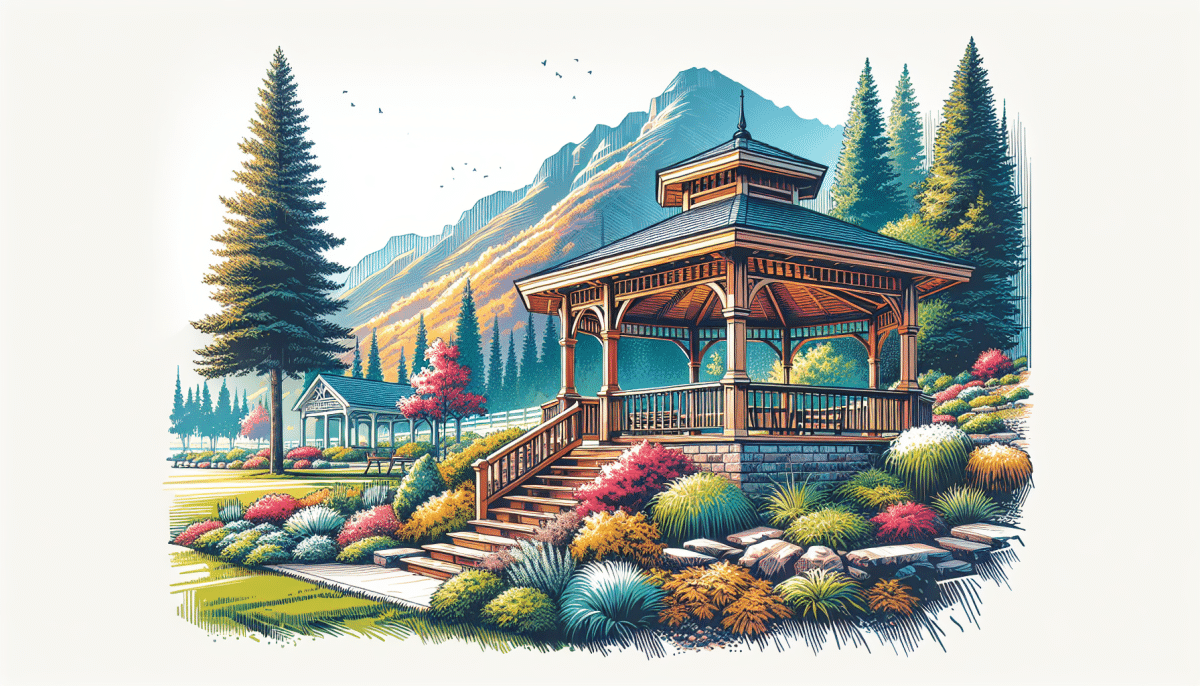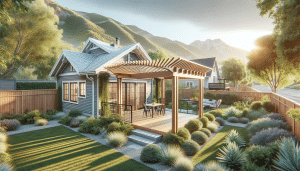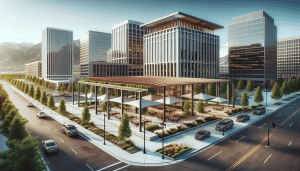Deciding on the perfect Wood type for building a Gazebo can be a bewildering task for many homeowners. Fortunately, as the Utah Pergola Company, experts in creating stunning, durable, and custom-designed outdoor structures, we’re here to illuminate your path. This guide aims to help you navigate through the best wood types for crafting gazebos that not only stand the test of time but also enhance the beauty of your outdoor living space. With our insights, we empower you to make an informed decision, ensuring your backyard becomes a haven of relaxation and beauty.
Contents
- 1 The Importance of Choosing the Right Wood
- 2 The Top Contenders
- 3 Cedar: The Aromatic Choice
- 4 Redwood: The Durable & Long-Lasting Wood
- 5 Pressure-Treated Wood: The Affordable Protector
- 6 Choosing the Right Wood for Your Climate
- 7 Maintenance and Care: Ensuring Longevity
- 8 Incorporating Personal Style
- 9 Professional Guidance Makes a Difference
- 10 Final Thoughts
The Importance of Choosing the Right Wood
Why does the wood type matter when building a gazebo? Firstly, the wood choice significantly impacts the gazebo’s durability and longevity. Wood that can withstand weather changes without deteriorating ensures your gazebo remains a centerpiece for years. Secondly, the aesthetic appeal of wood can transform your backyard. The right wood type complements your landscape, bringing harmony and elegance to your outdoor space.
Thus, understanding the properties of different woods and how they react to environmental factors is crucial. As professionals, we consider these factors, aiming to provide you with a gazebo that is both a beauty to behold and a steadfast structure.
The Top Contenders
Among the myriad of wood types available, certain ones stand out for gazebo construction. These woods offer a blend of strength, durability, and natural beauty, making them the go-to choices. Whether you’re envisioning a quaint garden feature or a sprawling outdoor living area, selecting from these top contenders is a step in the right direction.
We’ll dive into each wood type’s unique benefits and characteristics, providing you with a clearer understanding of what suits your outdoor space best. From the classic charm of Cedar to the robust resilience of pressure-treated lumber, each has its own set of advantages.
Cedar: The Aromatic Choice
Cedar is renowned for its natural beauty and aromatic scent, bringing an air of elegance and tranquility to your gazebo. Its rich color variations, from light amber to deep honey brown, adapt seamlessly to any landscape design. More than just its looks, cedar possesses inherent properties that resist decay, rot, and insect infestations, making it a durable choice for outdoor structures.
Additionally, cedar’s ability to withstand moisture changes without warping or cracking ensures your gazebo maintains its shape and integrity through varying weather conditions. This resilience, coupled with its environmental friendliness, positions cedar as a top contender for those prioritizing aesthetics and sustainability.
Redwood: The Durable & Long-Lasting Wood
Redwood stands out for its vibrant hues and exceptional durability. This wood type has a natural resistance to rot and pests thanks to its high tannin content, making it an ideal choice for gazebos in areas prone to such concerns. Its tight grain not only adds to its strength but also gives it a smooth finish, enhancing the overall look of your gazebo.
Though redwood is on the pricier side, its longevity and low-maintenance nature justify the investment. A well-cared-for redwood gazebo can last for decades, aging gracefully to a distinguished silver-gray hue that many homeowners find appealing. Opting for redwood means investing in timeless beauty and enduring quality.
Pressure-Treated Wood: The Affordable Protector
For homeowners seeking a balance between cost-efficiency and durability, pressure-treated wood emerges as a strong candidate. This wood type is treated with chemicals to fend off rot, insects, and moisture, extending its lifespan significantly when compared to untreated woods. Its robustness makes it particularly suited for gazebos that will face the harsh elements.
Although some may have concerns about the chemicals used in the pressure-treating process, modern practices have made this option safer and more environmentally friendly than ever before. Being highly versatile and economical, pressure-treated wood allows for creating a durable gazebo without straining your budget.
Choosing the Right Wood for Your Climate
The climate you live in plays a pivotal role in determining the best wood for your gazebo. Woods like cedar and redwood naturally resist moisture and decay, making them excellent choices for damp or humid climates. On the other hand, pressure-treated wood, with its enhanced protection against rot and pests, is well-suited for regions with high rainfall or termite risks.
Understanding your local climate’s challenges helps in selecting a wood that not only meets your aesthetic standards but also stands up to the environmental stresses it will face. Consulting with professionals can provide valuable insights into the most appropriate wood types for your specific needs.
Maintenance and Care: Ensuring Longevity
- Regular Cleaning: Keeping your gazebo clean from dirt and debris goes a long way in preventing decay and maintaining its beauty. A simple annual wash can make a significant difference.
- Protective Sealants: Applying a water-repellent sealant every few years helps in shielding the wood from moisture and UV damage, preserving its color and structural integrity.
- Inspection and Repair: Regularly inspect your gazebo for signs of wear, such as loose boards or rot. Early detection allows for timely repairs, extending the lifespan of your gazebo.
- Pest Control: For wood types susceptible to insects, consider safe, periodic treatments to deter pests. This preventive measure keeps your gazebo in top condition year-round.
- Climate Considerations: Tailoring your maintenance routine to your climate’s demands ensures your gazebo withstands its specific challenges, be it intense sun, heavy rain, or snow.
Incorporating Personal Style
Choosing the right wood type also offers an opportunity to infuse your gazebo with personal style and flair. Whether you lean towards the rustic charm of cedar, the elegance of redwood, or the practicality of pressure-treated lumber, each wood has its unique character that can reflect your personal taste.
Beyond the wood type, consider the finishing touches that can make your gazebo truly yours — from the stain color to decorative elements. These choices allow you to create a gazebo that not only serves as a functional outdoor structure but also as an extension of your home’s personality.
Professional Guidance Makes a Difference
While understanding the properties and benefits of different wood types is essential, partnering with seasoned professionals like us can significantly ease the decision-making process. With years of experience in constructing beautiful, durable gazebos, we provide expert advice tailored to your specific needs and preferences.
Our team at Utah Pergola Company is dedicated to ensuring your gazebo project not only meets but exceeds your expectations. From design to material selection and construction, we guide you every step of the way, delivering a gazebo that enhances your outdoor living experience.
Final Thoughts
Your backyard oasis awaits, and choosing the right wood for your gazebo is the first step towards realizing your outdoor living dream. With the insights provided, we hope to have empowered you with the knowledge to make an informed decision.
To learn more about how we can help bring your vision to life or to start your gazebo project today, don’t hesitate to reach out by phone at 801-784-6082 or Request a Free Quote. Let us help you create a backyard retreat that you and your family will enjoy for years to come.




